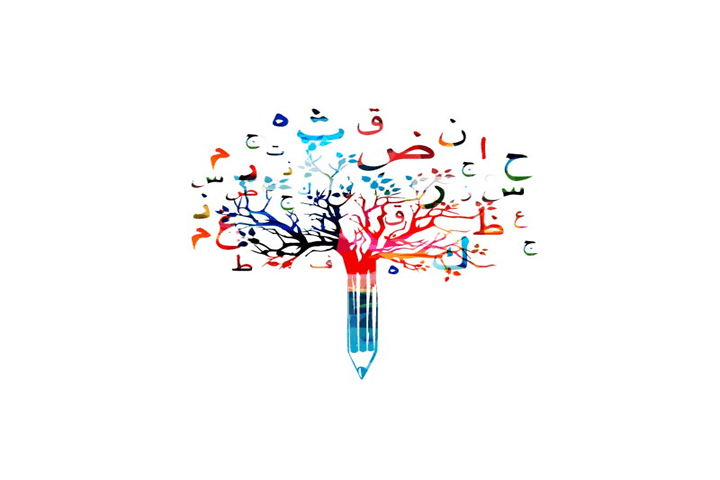Arabic pronunciation can seem daunting at first, but unlocking the secrets of its sounds is incredibly rewarding. One fascinating aspect that often surprises learners is the concept of “emphatic letters.” If you’ve ever wondered why some Arabic sounds feel “heavier” or pronounced with more resonance, you’re on the right track! This article will demystify emphatic letters in Arabic, helping you master their pronunciation and speak Arabic with greater accuracy and confidence.
What are Emphatic Letters in Arabic?
In Arabic, certain consonants are pronounced with a specific quality called “emphaticness” or “velarization.” This means that when you articulate these letters, the back of your tongue rises towards the soft palate (the velum), creating a fuller, deeper sound. Think of it as adding a “thickness” or “roundness” to the sound compared to their non-emphatic counterparts. Understanding and correctly producing these emphatic letters is crucial for clear communication and distinguishing between similar-sounding words.
The Emphatic Letters (الحروف المُفَخَّمة)
There are seven primary emphatic letters in Arabic, often referred to as “heavy” letters. These are:
- ص (Saad): Sounds like a thick ‘s’
- ض (dhaad): Sounds like a thick ‘d’
- ط (Ṭaaʾ): Sounds like a thick ‘t’
- ظ (DHaaʾ): Sounds like a thick ‘dh’ (as in ‘that’)
- غ (ghayn): A guttural ‘gh’ sound, similar to a French ‘r’ but deeper
- ق (qaaf): A deep, guttural ‘k’ sound, pronounced further back in the throat than a regular ‘k’
- خ (khaaʾ): A guttural ‘kh’ sound, similar to the ‘ch’ in Scottish ‘loch’
Let’s look at some examples to illustrate the difference:
| Emphatic Letter | Non-Emphatic Counterpart | Example with Emphatic Letter | Example with Non-Emphatic Counterpart | Meaning |
|---|---|---|---|---|
| ص (Ṣād) | س (Sīn) | صَغير (ṣaghīr) | سَريع (sarīʿ) | Small / Fast |
| ض (Ḍād) | د (Dāl) | ضَرب (ḍaraba) | دَرس (darasa) | To hit / To study |
| ط (Ṭāʾ) | ت (Tāʾ) | طَويل (ṭawīl) | تَمر (tamr) | Tall / Dates |
| ظ (Ẓāʾ) | ذ (Dhāl) | ظَهر (ẓahar) | ذَهب (dhahaba) | Back / To go |
Note: For غ (Ghāʾ), ق (Qāf), and خ (Khāʾ), there aren’t direct non-emphatic counterparts in the same way as the s/ṣ, d/ḍ, t/ṭ, dh/ẓ pairs, but their emphatic quality is inherent and crucial for their correct pronunciation.
Why is Emphatic in Arabic So Important?
The emphasis on these letters is not just a subtle nuance; it’s a fundamental aspect of Arabic phonology that can change the meaning of words. Mispronouncing an emphatic letter can lead to misunderstandings or even alter the word entirely.
Consider these minimal pairs, where the only difference is the emphatic nature of one letter:
- to become (ṣāra – صَارَ) vs. to walk (sāra – سَارَ)
- to be good/pleasant (ṭāba – طَابَ) vs. to repent (tāba – تَابَ)
- to go astray (ḍalla – ضَلَّ) vs. to guide/indicate (dalla – دَلَّ)
As you can see, mastering these sounds is not just about sounding more “native”; it’s about being understood correctly.
Tips for Mastering Emphatic Pronunciation
Practicing the pronunciation of emphatic letters in Arabic takes time and consistent effort. Here are some tips to help you along the way:
- Listen Actively: Pay close attention to native speakers. Notice how their mouth and tongue move (if you can observe) and try to imitate the sound. Use resources like podcasts, Arabic news, and online videos.
- Exaggerate at First: When practicing, consciously exaggerate the “thickness” of the sound. This can help you feel the correct tongue placement.
- Record Yourself: Record your pronunciation and compare it to a native speaker. This is an excellent way to identify areas for improvement.
- Minimal Pair Practice: Focus on practicing minimal pairs (like those listed above) to train your ear and mouth to distinguish between emphatic and non-emphatic sounds.
- Focus on Tongue Position: For the letters ص, ض, ط, ظ, try to feel the back of your tongue lifting towards the roof of your mouth. For غ, ق, خ, focus on the sound coming from deeper in your throat.
- Seek Feedback: If possible, ask a native Arabic speaker or your Arabic teacher for feedback on your pronunciation.
Emphatic Letters and Vowels
It’s also worth noting that emphatic consonants can influence the pronunciation of adjacent vowels. For example, the vowel ‘a’ (فتحة – fatḥah) tends to be pronounced as a deeper, more open ‘a’ sound (closer to the ‘o’ in “hot”) when it follows an emphatic letter, as opposed to the lighter ‘a’ sound after a non-emphatic letter. This subtle but important detail further highlights the pervasive influence of emphatic in Arabic sounds.
Conclusion
Understanding and mastering emphatic letters in Arabic is a significant step towards achieving fluent and accurate Arabic pronunciation. While they may seem challenging at first, consistent practice and focused listening will undoubtedly lead to improvement. By paying attention to these unique sounds, you’ll not only enhance your speaking abilities but also gain a deeper appreciation for the beauty and intricacies of the Arabic language. Keep practicing, and soon you’ll be distinguishing between (س) and (ص), (ت) and (ط) with ease!
If you want to learn more about Arabic pronunciation, visit our blog on www.kaleela.com and don’t forget to download the Kaleela app to learn Arabic alphabet effectively.



